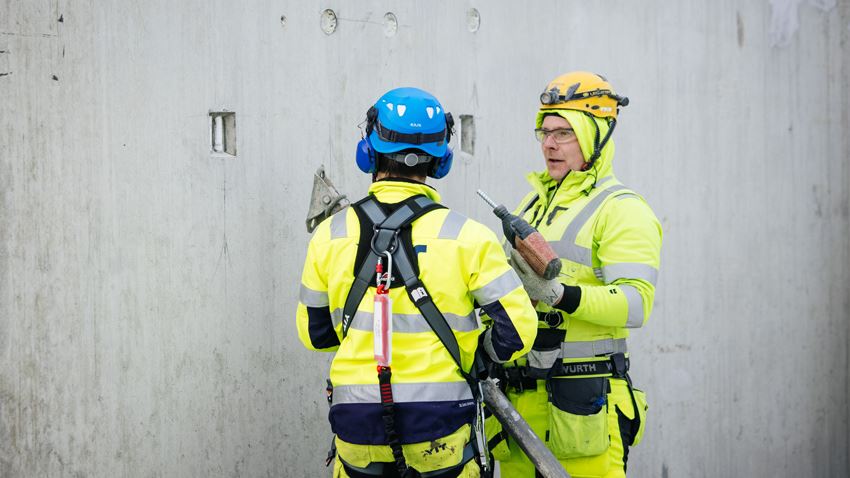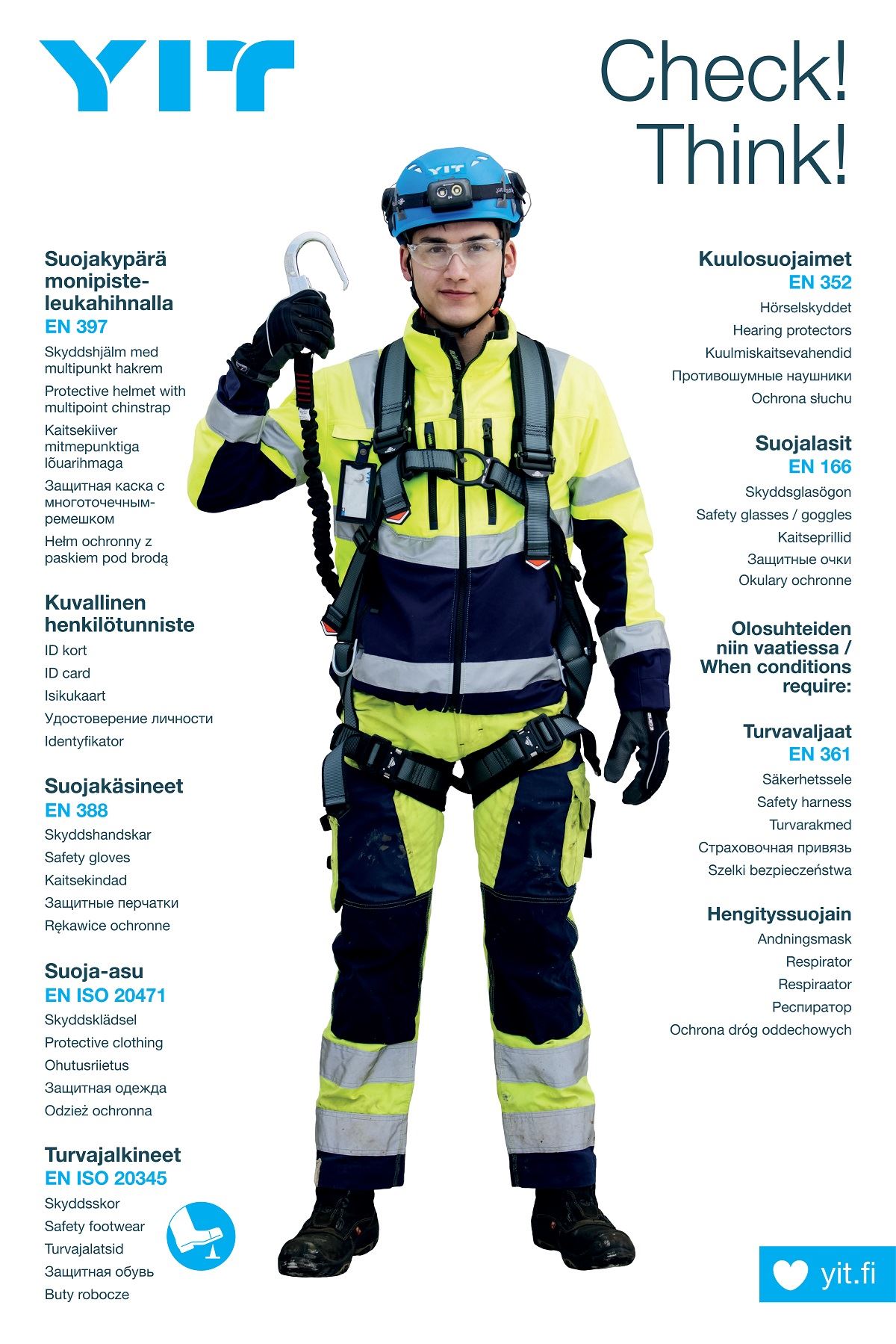Everyone at YIT construction sites, including our own personnel, subcontractors and independent contractors, need to participate in site inductions. Start the induction here.
Occupational safety at our construction sites

Everyone has the right to a safe work environment
At all of our construction sites, we follow the instructions and regulations concerning occupational safety and health.
We want to provide a healthy and safe working environment
Occupational health and safety is an integral part of our values and daily operations. We want to respect life and provide a safe and healthy working and living environment for our personnel, partners, customers and other stakeholders. We want to continuously develop and improve our health and safety practices. We can all contribute to this through our own actions. We also expect our health and safety practices to be implemented by our subcontractors and in our supply chain.
At our construction sites, we require
- that the foremen and blue-collar employees prepare a work specific safety plan (WSSP) for each new work phase or type of work beginning at the site in Finland.
- taking into account and acting in accordance with the Safety reminders.
- following the general occupational safety and health requirements at YIT’s construction sites.
- the use of personal protective equipment. An ID card with photo identification referred to in the Occupational Safety and Health Act, a site-specific access badge and a valid occupational safety card is required at sites in Finland.
Let’s look after ourselves and each other. Care – don’t walk by!
Personal protective equipment at YIT’s construction sites
Appropriate, suitable for the task at hand and well-fitting protective equipment and clothing are a basic prerequisite for meaningful and safe work. The minimum equipment required at our construction sites is described below. Depending on the hazards and exposure of the work task, the necessary additional protection should always be used. The protective equipment must fit the user well and be suitable for the work; for example, when spiking, operating an angle grinder and drilling upwards, we require sealed safety goggles instead of ordinary goggles.
Visitors are always escorted to the site and wear protective equipment specified in the site guidelines.
- Safety helmet with multi-point chinstrap (EN 397), fastened, to be used at all times. When fastened, the maximum gap between the chinstrap and the chin is two fingers.
- Safety goggles (EN 166) according to the hazards of the work, to be used at all times.
- Safety gloves (EN 388) according to the hazards of the work, generally to be used at all times. Unless other specific risk isn’t recognized, use cut-protected gloves (min. class C). The highest risk should be considered when choosing gloves: chemicals, cold, vibration, etc.
- Visible and reflective protective clothing (EN ISO 20471), to be used at all times. At least the top part of the clothing should be class 2, and in traffic areas all clothing should be class 3.
- Safety footwear (EN ISO 20345), to be used at all times (not mandatory for visitors). We require our own personnel to wear footwear with penetration-resistant steel soles. We prefer ankle supporting models.
- Hearing protection (EN 352), to be carried at all times. Must be used when the 85 dB limit is exceeded. No radio headphones or earbuds are allowed under the cups.
- Fall protection and a respirator, if necessary, according to the risk assessment.
- Photo ID card.
Minimum protective equipment is a prerequisite for access to the construction site. Each contractor shall procure the equipment of its own personnel.

Safety reminders
YIT’s occupational Ssafety reminders remind us of everyday matters which are of enormous importance for both our own and others’ safety and well-being. By acting in accordance with the Safety rules, we can avoid the most common and serious incidents. Occupational safety is respect for life.
By bearing in mind YIT’s five Safety reminders in everything we do, we can all contribute to building a safe and healthy working environment that extends its influence to our lives at home and leisure time.






